
The Tillamook County Creamery Association (TCCA) is a farmer-owned dairy cooperative headquartered in Tillamook County, Oregon, United States. The association manufactures and sells dairy products under the "Tillamook" brand name. Its main facility is the Tillamook Creamery, located two miles north of the city of Tillamook on U.S. Route 101.

Prentice is a village in Price County, Wisconsin, United States, near where Highway 13 crosses the Jump River. The population was 660 at the 2010 census. The village is located within the Town of Prentice.
Glanbia plc is an Irish multinational nutrition company that owns several consumer brands that produce lifestyle products such as food supplements and ingredients businesses. Glanbia is headquartered in Kilkenny, Ireland with over 5,500 employees in over 30 countries around the world. Glanbia’s consumer brands and ingredients are sold or distributed in over 130 countries. North America is the company’s largest market, and it also has a presence in Europe, Middle East, Asia-Pacific and Latin America. Glanbia's primary listing is on Euronext Dublin. Glanbia comprises three divisions: Glanbia Nutritionals, Glanbia Performance Nutrition and Joint Ventures.
The Cabot Creamery Cooperative is an American dairy agricultural marketing cooperative owned by Agri-Mark. The cooperative has a plant in Cabot, Vermont, but its administrative headquarters is in Waitsfield, Vermont.
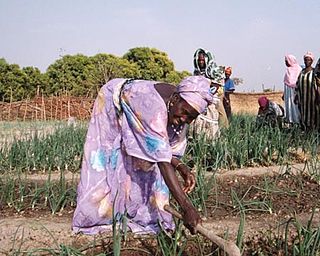
An agricultural cooperative, also known as a farmers' co-op, is a producer cooperative in which farmers pool their resources in certain areas of activities.
Farmers Union is a brand name established by the South Australian Farmers' Co-operative Union Ltd (SAFU), and now owned by Bega Cheese

Gay Lea Foods Co-operative Limited is a dairy products co-operative in Canada producing butter, sour cream, cottage cheese, whipped cream and lactose free milk for retail, foodservice, industrial and export markets. Gay Lea also produces a new product called "Spreadables", which is a spreadable butter, made as a canola oil and butter blend, that tastes like butter but is spreadable directly out of the fridge. The company is based in Mississauga, Ontario and owned and operated by Ontario milk producers, currently representing approximately thirty-five per cent of all Ontario dairy farms.
The 1933 Wisconsin milk strike was a series of strikes conducted by a cooperative group of Wisconsin dairy farmers in an attempt to raise the price of milk paid to producers during the Great Depression. Three main strike periods occurred in 1933, with length of time and level of violence increasing during each one.

Prairie Farms Dairy is a dairy cooperative founded in Carlinville, Illinois, and now headquartered in Edwardsville, Illinois, a suburb of St. Louis. As a dairy cooperative, Prairie Farms receives milk from producers and converts it into many different products, including cheese, butter, ice cream, sour cream, cottage cheese, various dips, yogurt, and fluid milk. Prairie Farms also produces and sells juices, flavored drinks, and pre-made iced tea.
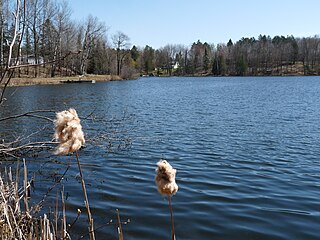
Perkinstown is an unincorporated community located in the town of Grover, Taylor County, Wisconsin, United States. The hamlet is scattered around Lake Kathryn, surrounded by Chequamegon National Forest, 10 miles (16 km) east-northeast of Gilman, reached by County Highway M and several gravel roads.
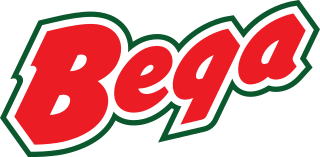
The Bega Group is an Australian diversified food and drinks company with manufacturing sites in New South Wales, Queensland, Western Australia and Victoria. Founded as an agricultural cooperative in the town of Bega, New South Wales by their dairy suppliers, it became a public company in 2011 when it listed on the Australian Securities Exchange. Close to half of shares publicly traded are still held by Bega's farmer-suppliers. It is currently one of the largest companies in the dairy sector in Australia, with a base milk supply in 2018 of approximately 750 million litres per annum.
Tirlán is an Irish dairy co-operative based in Kilkenny, Ireland. Its catchment area mainly covers the South-East and Midland regions of Ireland. Tirlán processes an annual volume of 3.2 billion litres of milk and handles 190,000 tonnes of green grain.
First Milk is a dairy co-operative in Britain which manufactures cheese, specialist dairy ingredients and whey proteins for its customers, as well as providing traceable fresh milk to a range of dairy manufacturers and food processors. As a dairy co-operative, owned and run by farmers; the area covered by its milk pool runs from the Mull of Kintyre in Scotland down through England and Wales.

The Clarks Grove Cooperative Creamery is a historic creamery in Clarks Grove, Minnesota, United States. It was established in 1890 as one of the first cooperative creameries in Minnesota. The Clarks Grove Cooperative Creamery used new technology and a well-organized cooperative system. It became a model for the Minnesota dairy industry. Ten years later, there were more than 550 cooperative creameries in the state.
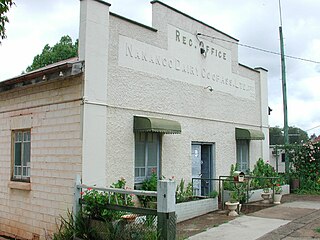
Nanango Butter Factory Building is a heritage-listed factory at George Street, Nanango, South Burnett Region, Queensland, Australia. It was built in 1927. It was added to the Queensland Heritage Register on 3 June 2005.

Teeswater Creamery is a dairy business in the town of Teeswater, Ontario, Canada. It is the oldest creamery in Ontario. Since 1981 it has been owned by the Gay Lea Foods Co-operative.
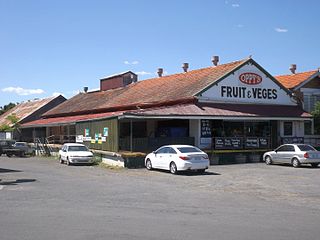
The Boonah Butter Factory is a heritage-listed former butter factory in Boonah, Scenic Rim Region, Queensland, Australia. Constructed in 1916, it is a prominent landmark at the intersection of Boonah-Rathdowney Road and Railway Street on the northern entry to Boonah. During the first part of the twentieth century, it was one of the most modern butter factories in the Commonwealth, the largest butter factory in the Southern Hemisphere, had the second highest output of butter in Queensland and was a major supplier of dairy products to Brisbane. The former Boonah Butter Factory office, which is currently the premises of Flavours Cafe, is on the Local Heritage Register of the Scenic Rim Regional Council in acknowledgement of the site's historic, aesthetic and cultural significance.

Agriculture is a significant sector in Wisconsin's economy, producing nearly $104 billion in revenue annually. The significance of the state's agricultural production is exemplified by the depiction of a Holstein cow, an ear of corn, and a wheel of cheese on Wisconsin's state quarter design. In 2017 there were 64,800 farms in the state, operating across 14.3 million acres of land.

Dairy is a major industry in the U.S. state of Wisconsin. Being known for its dairy production, the state is often called "America's Dairyland." The industry is prominent in official state symbols—being displayed on the state's license plates, state's slogan, and on the state quarter.













